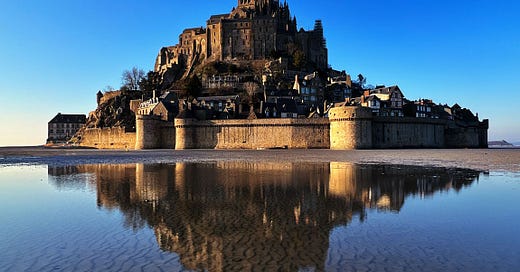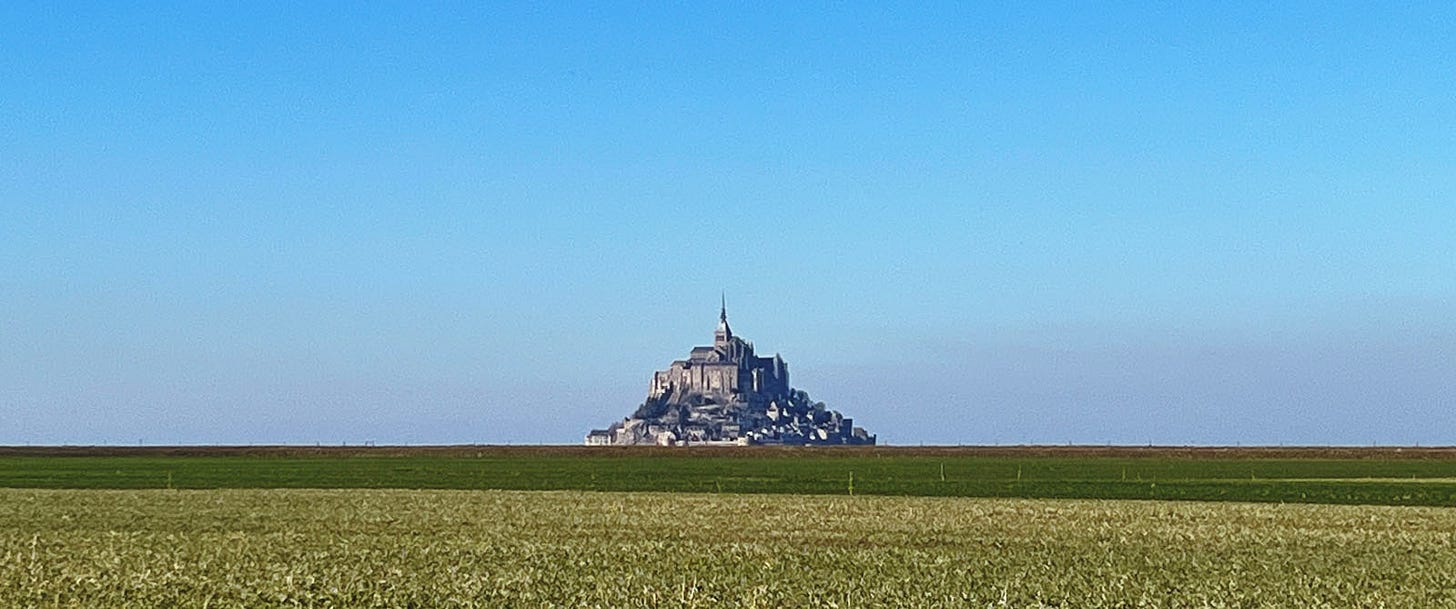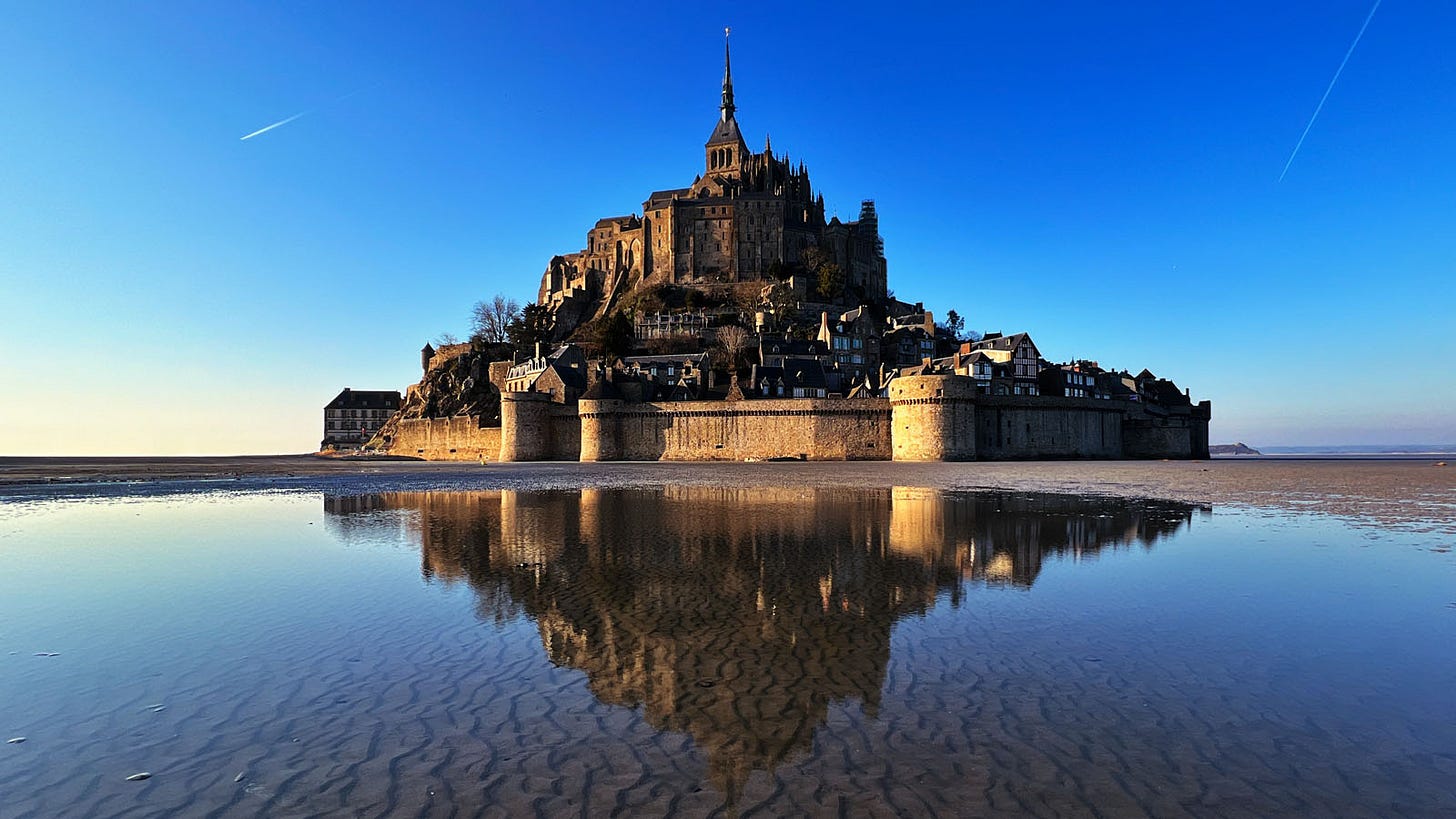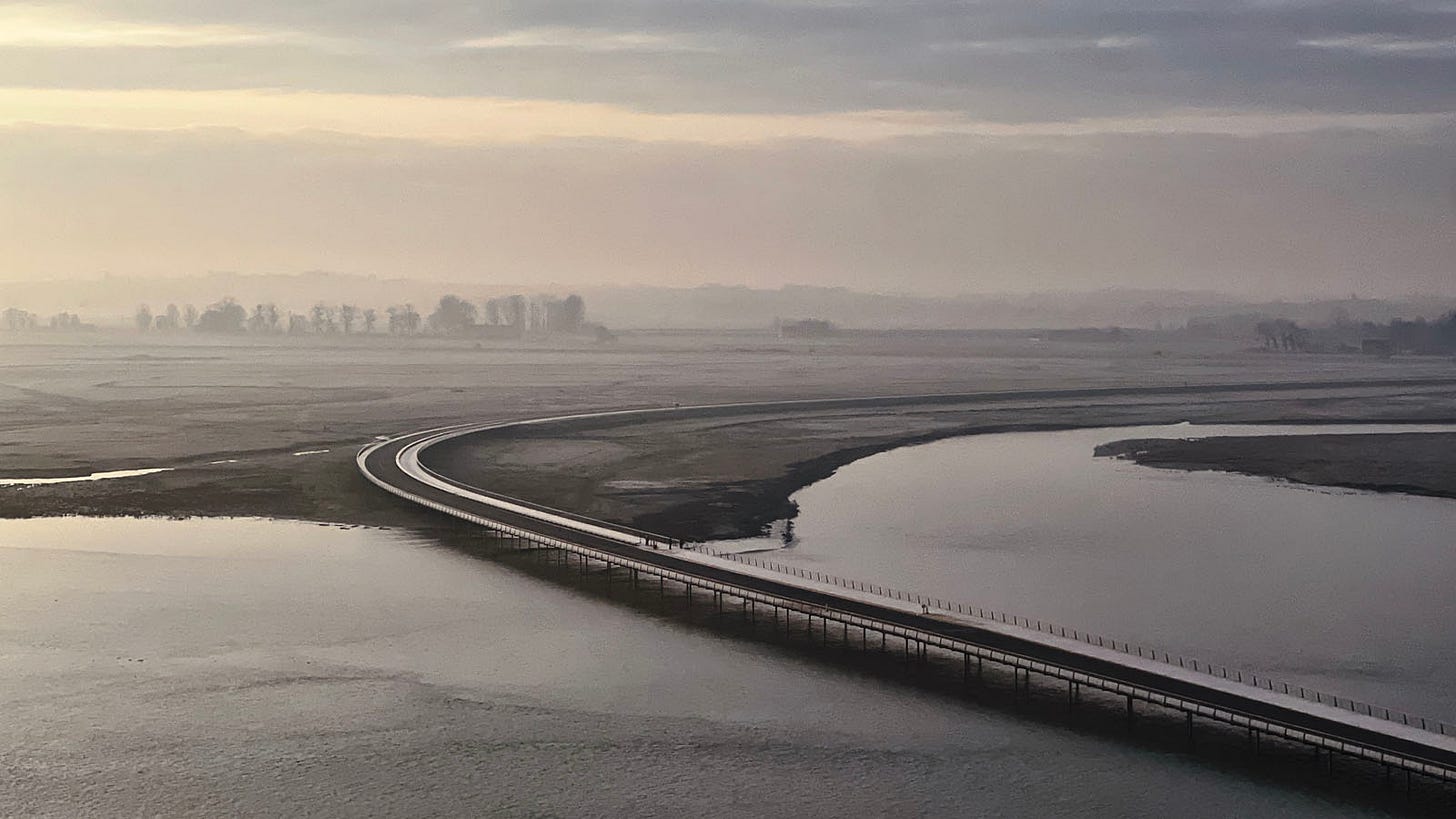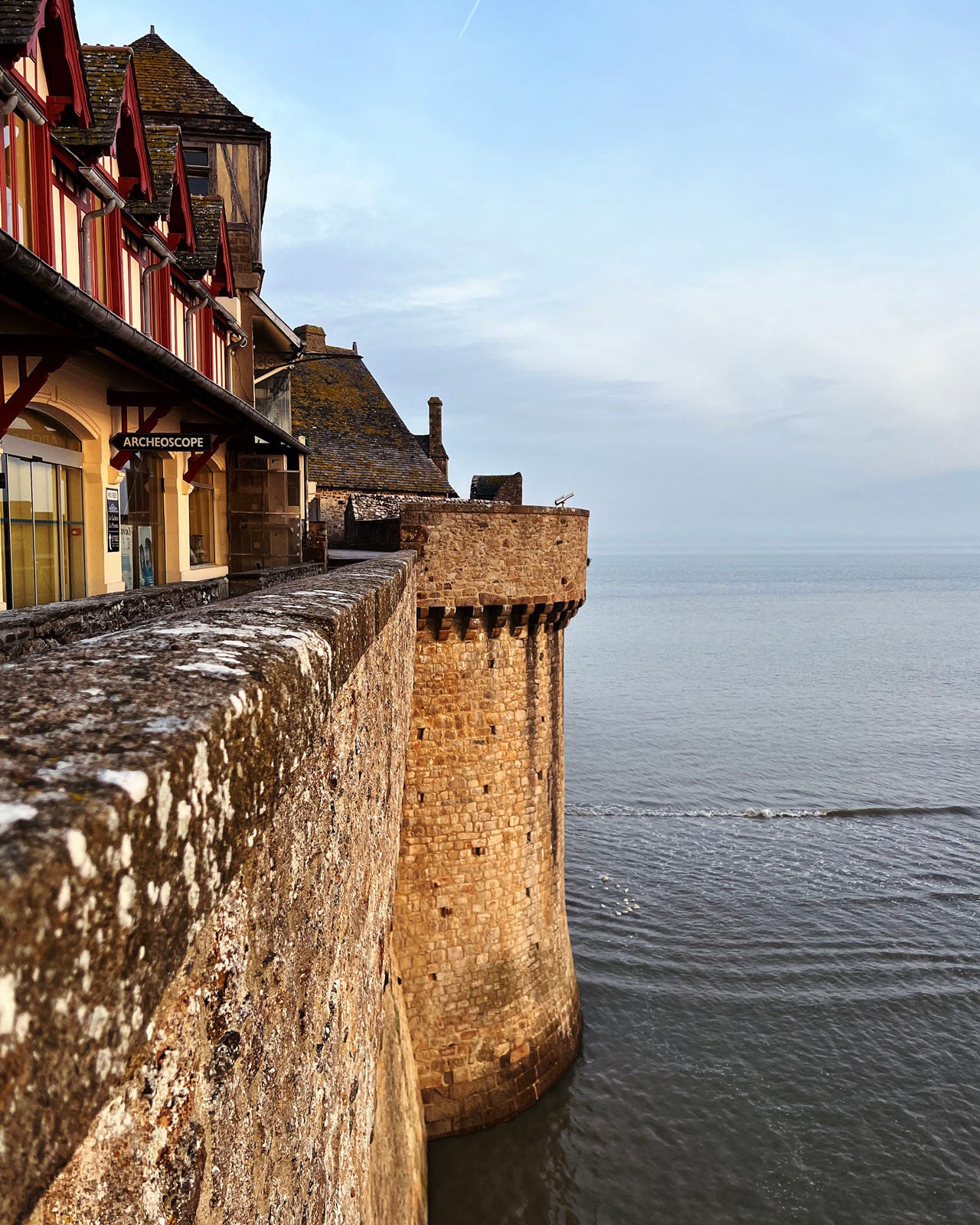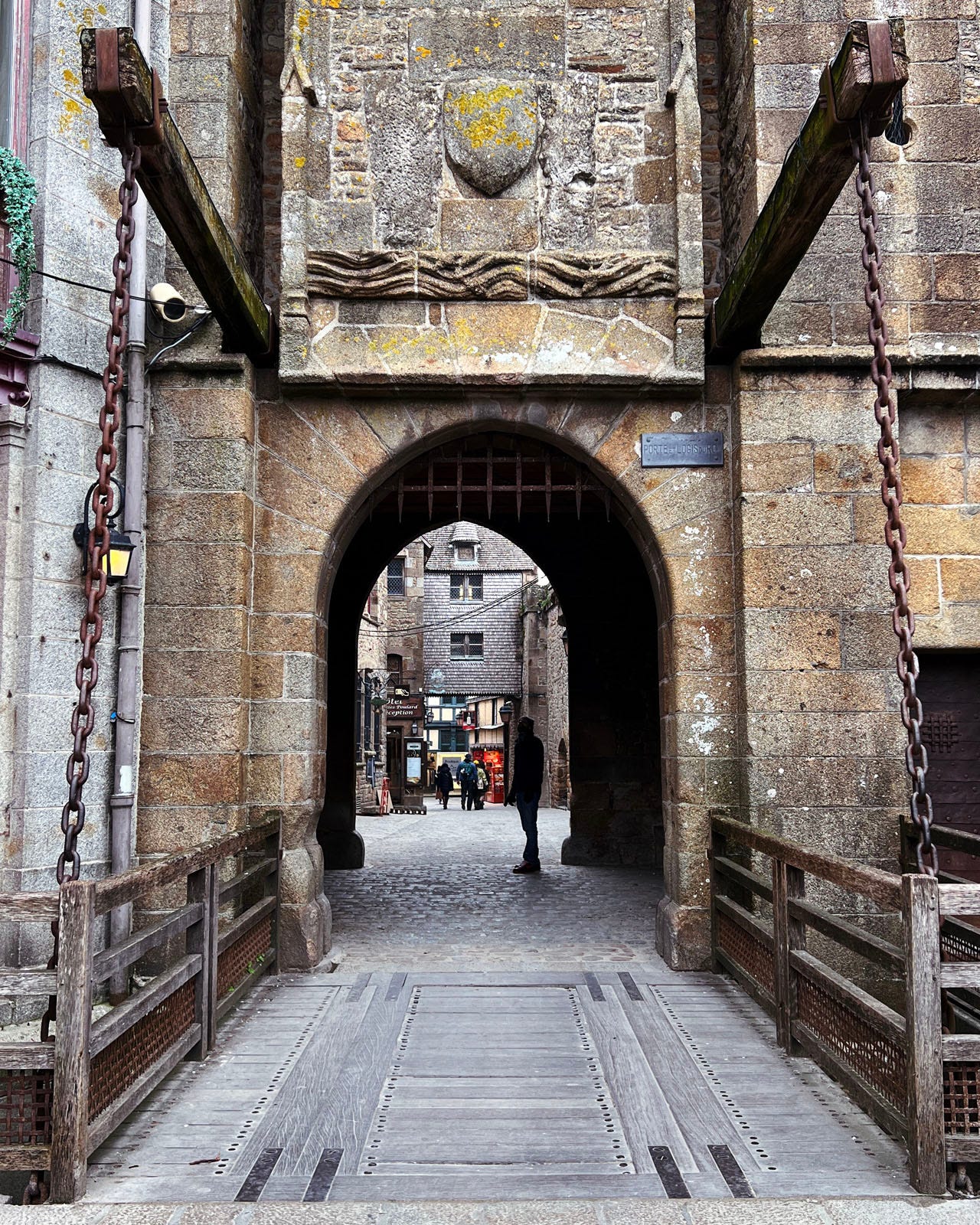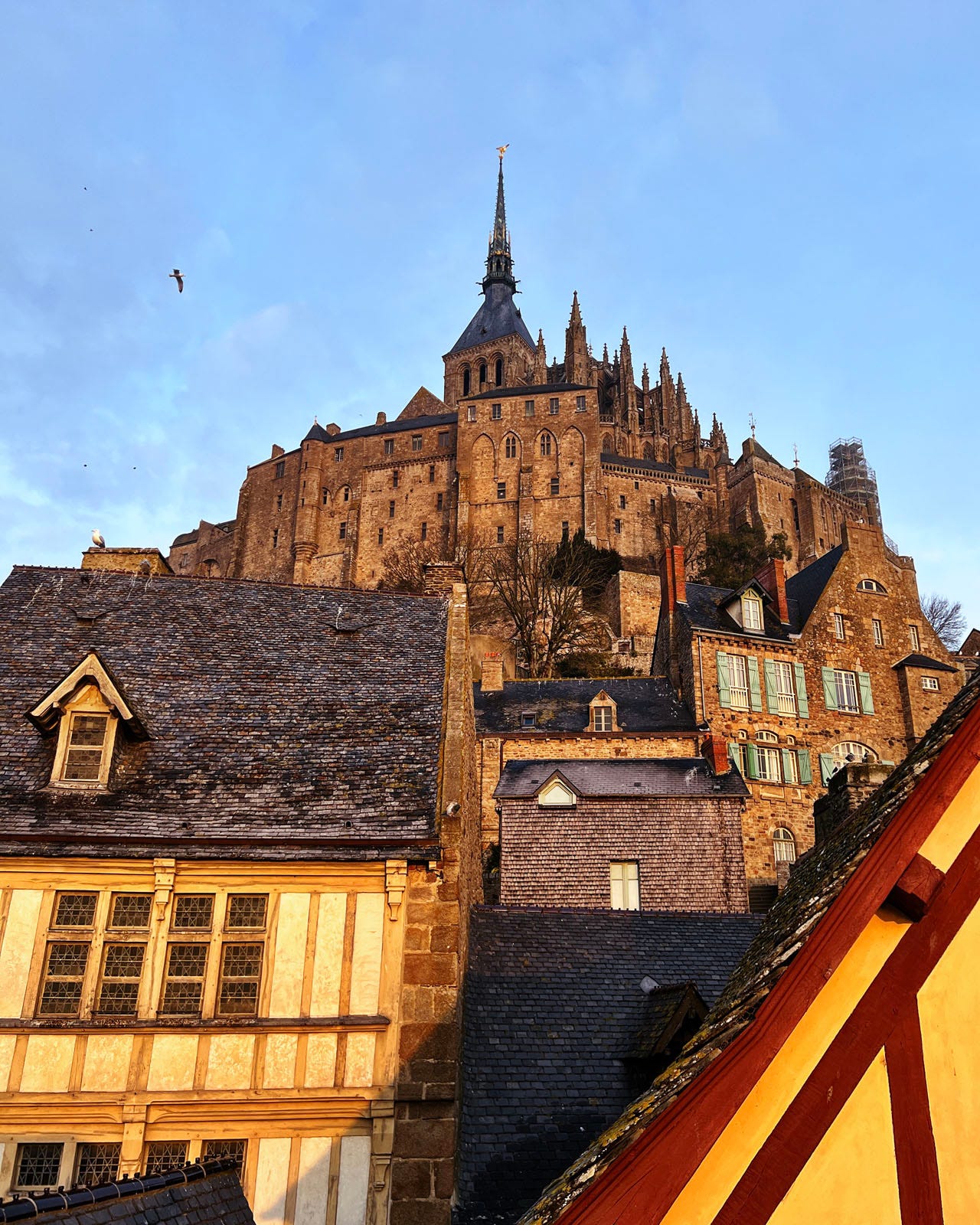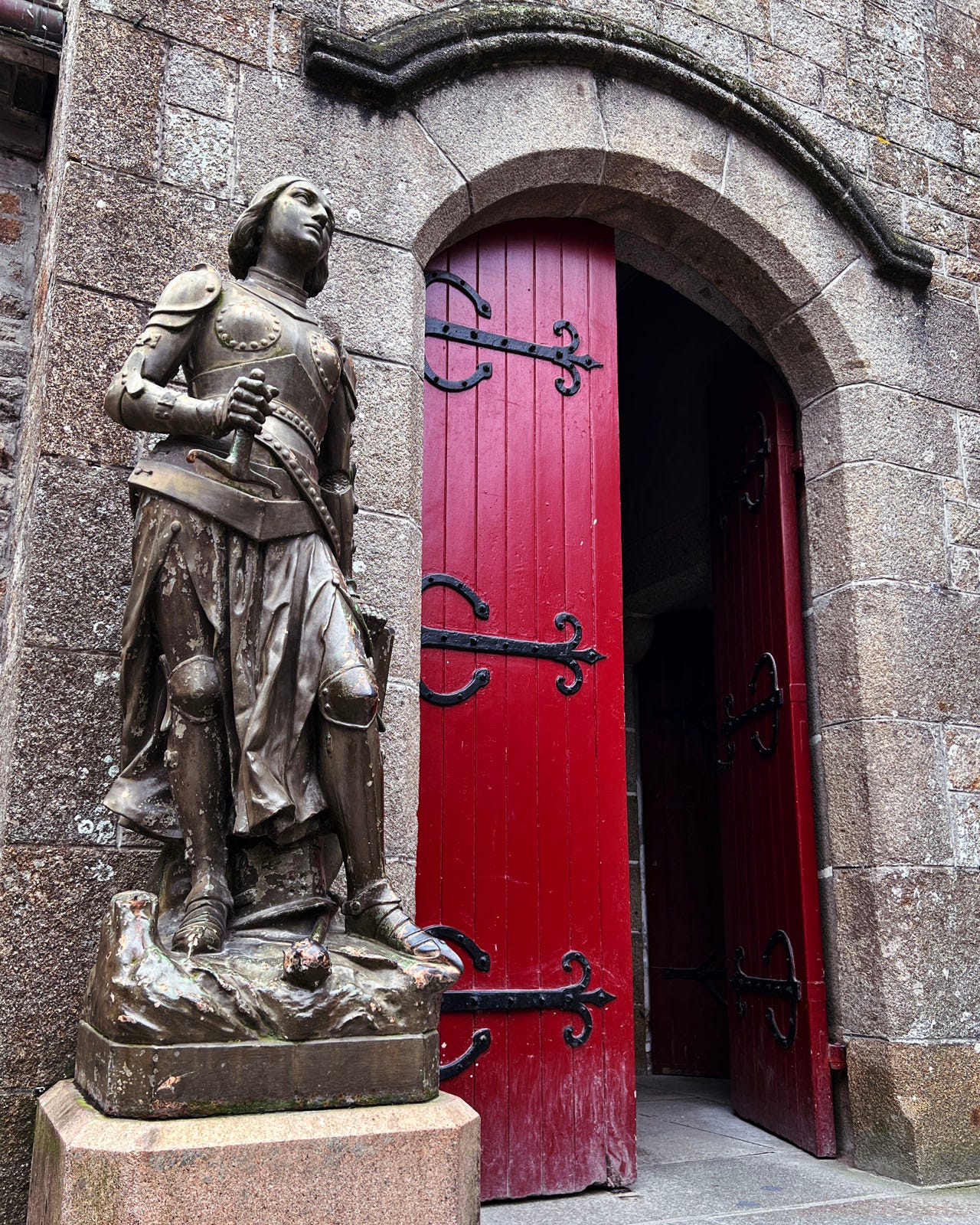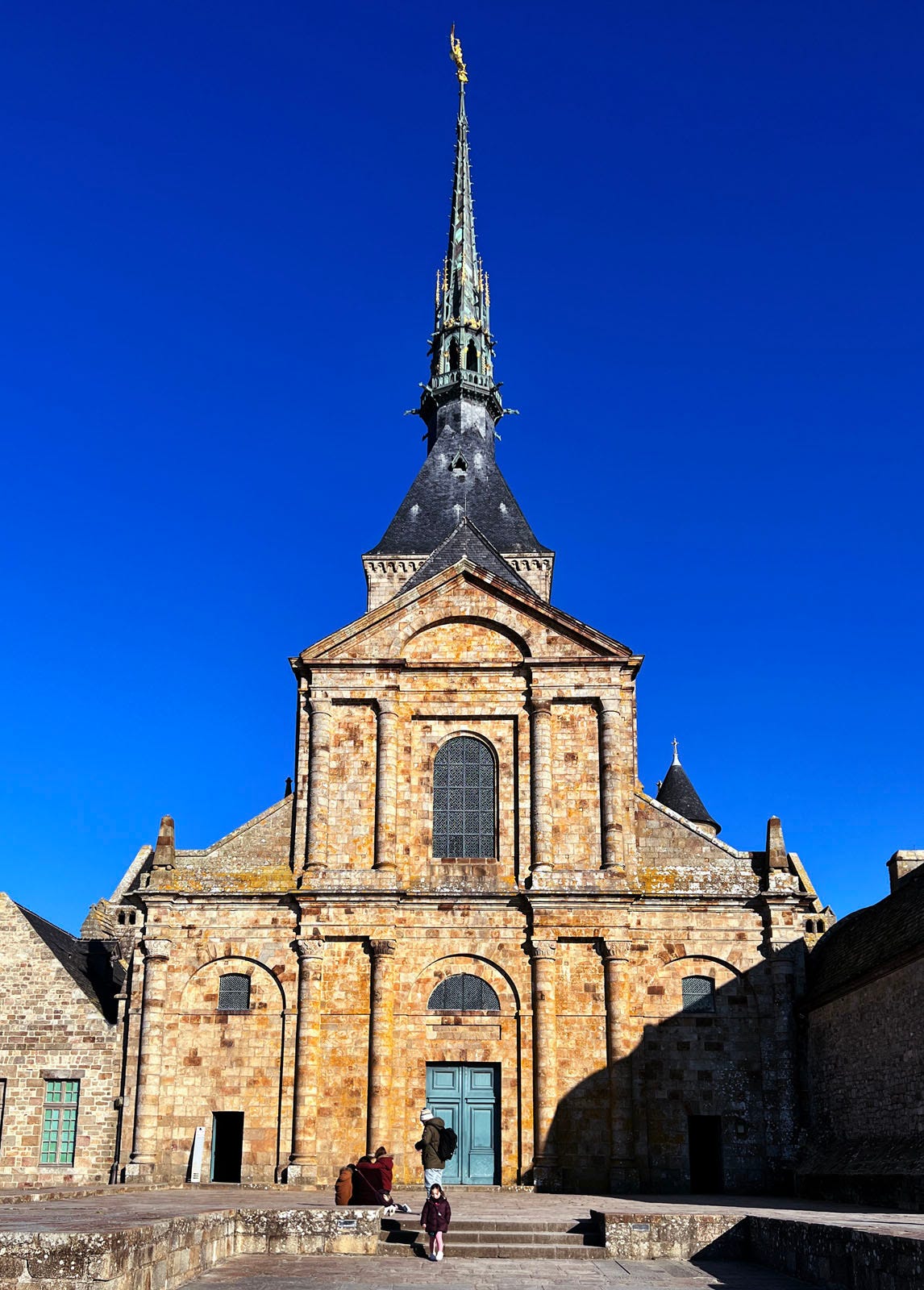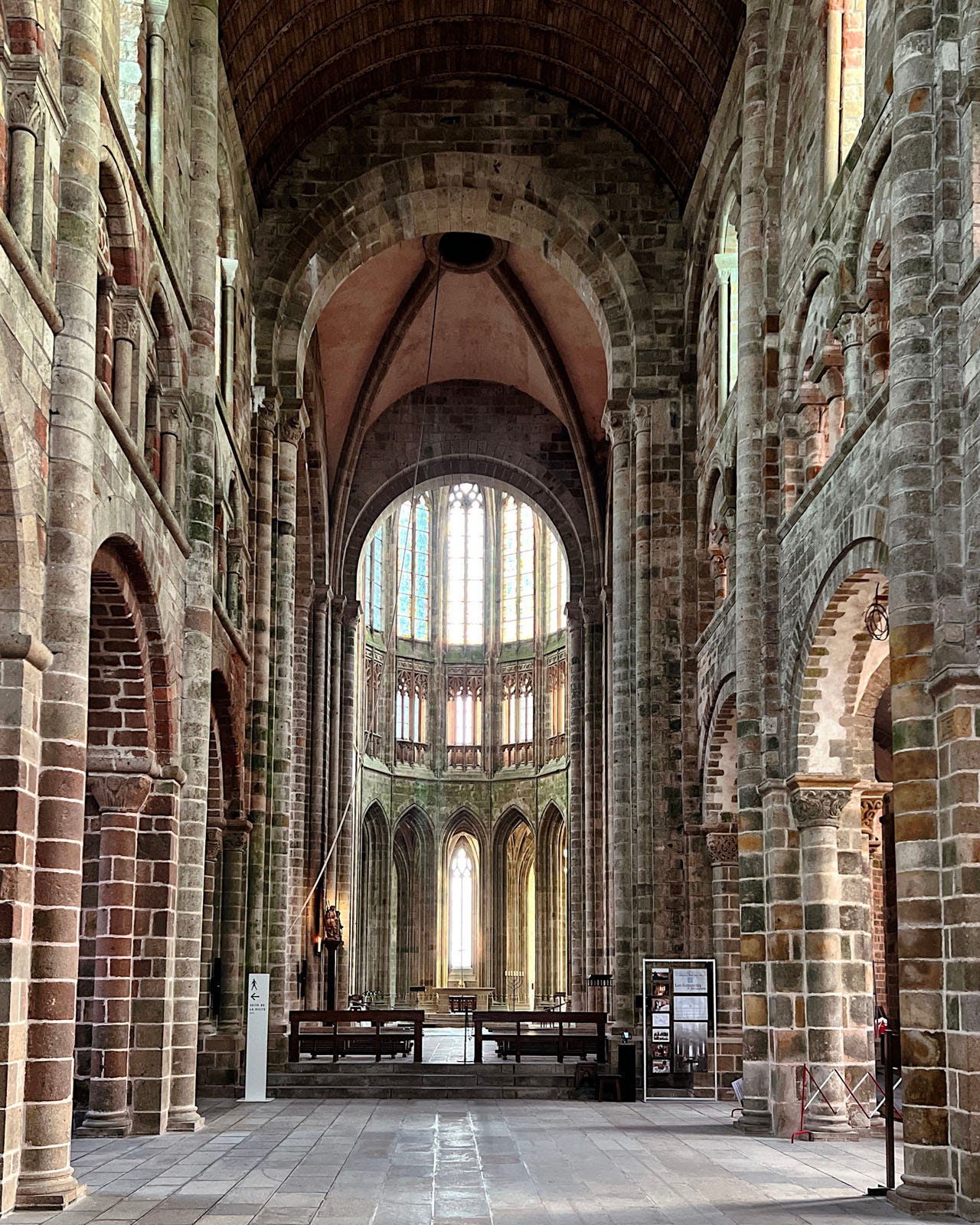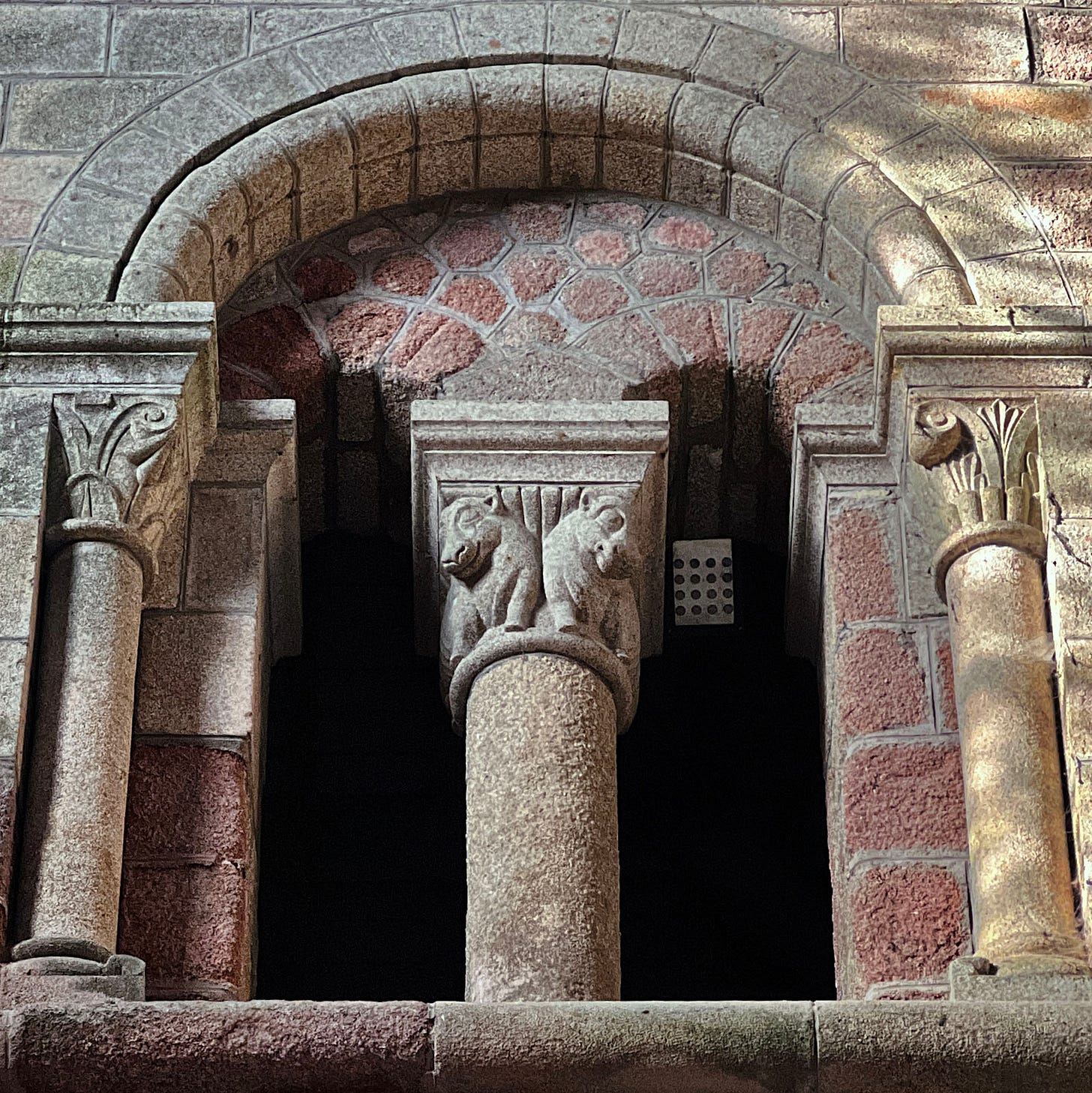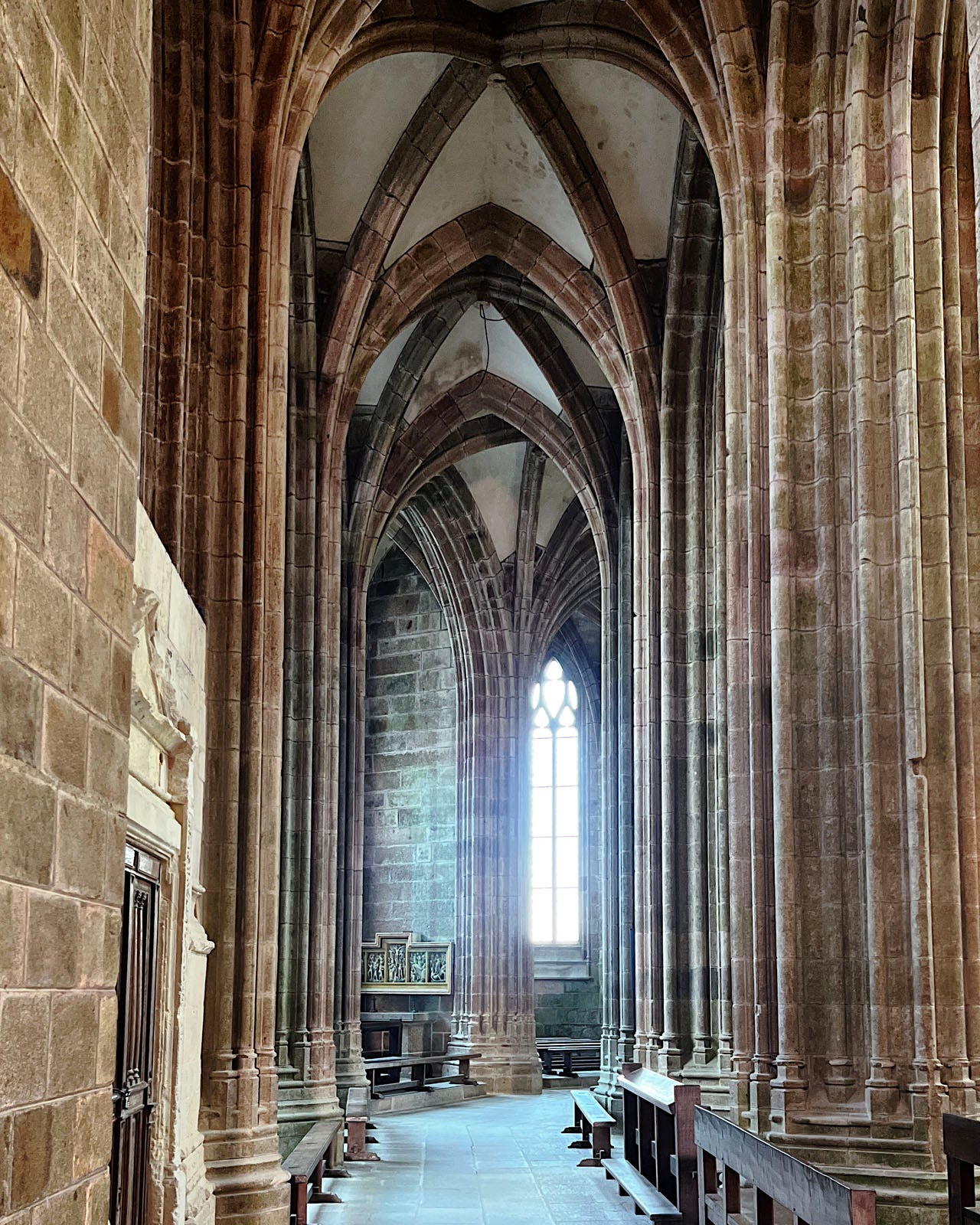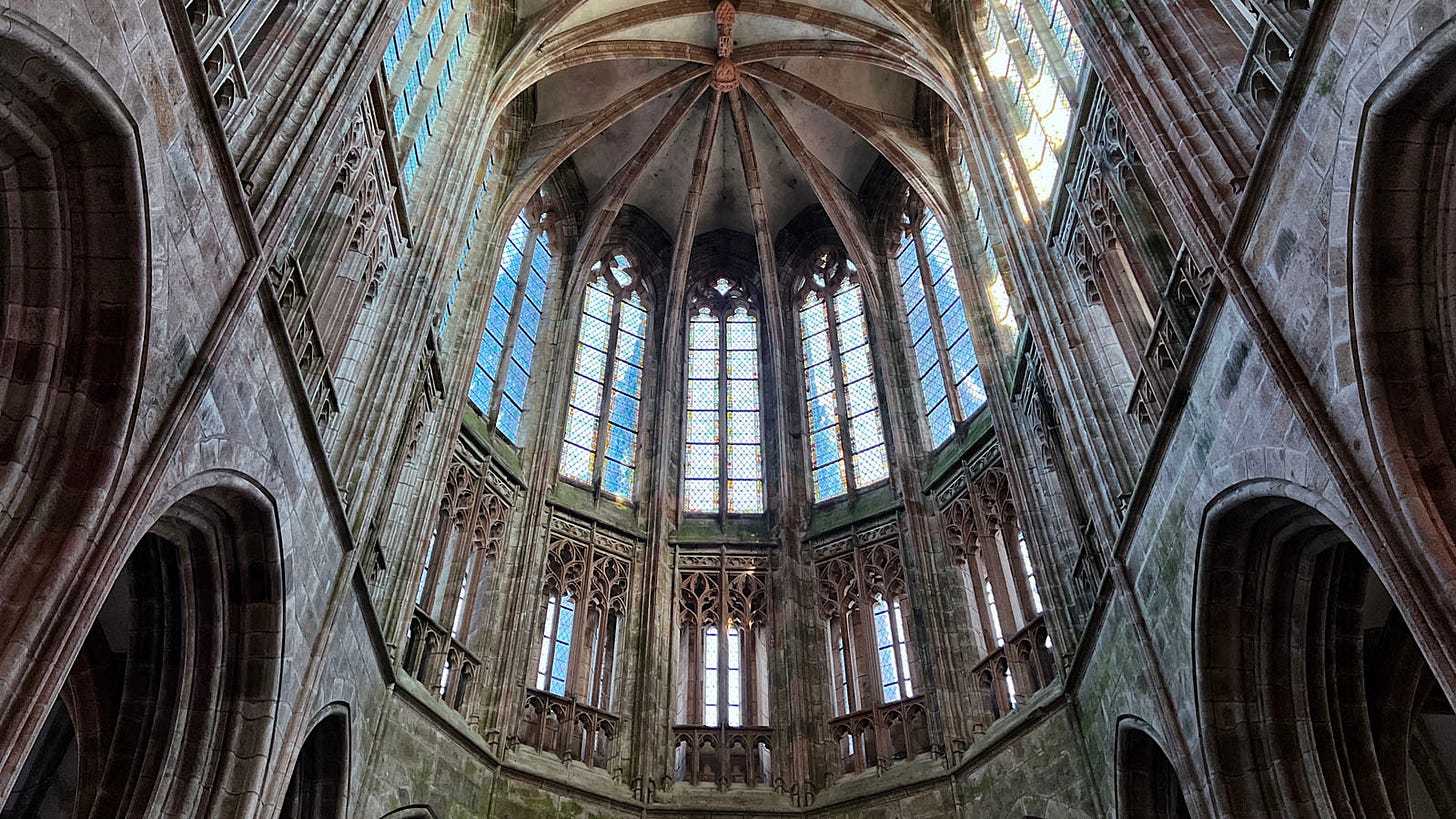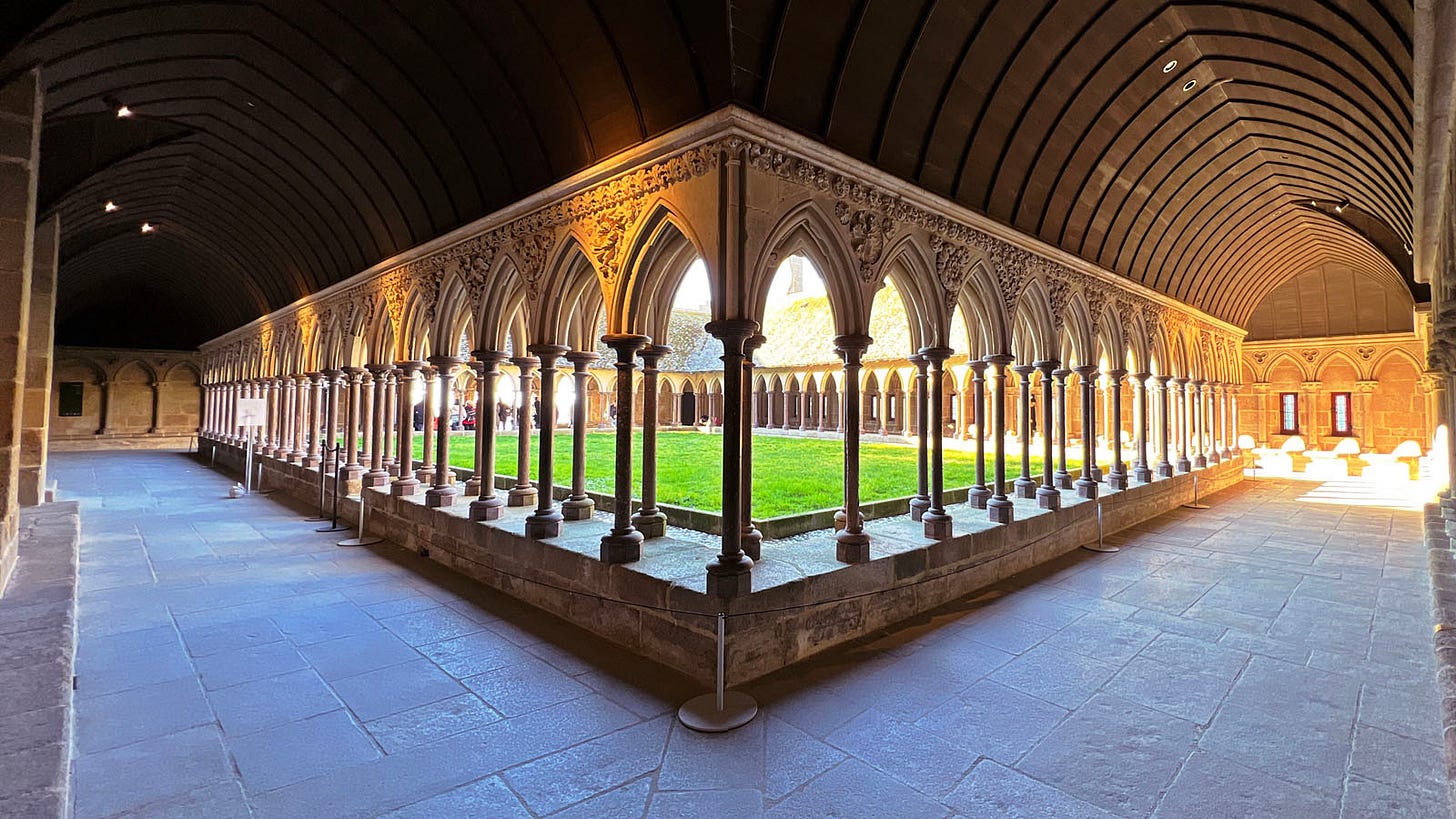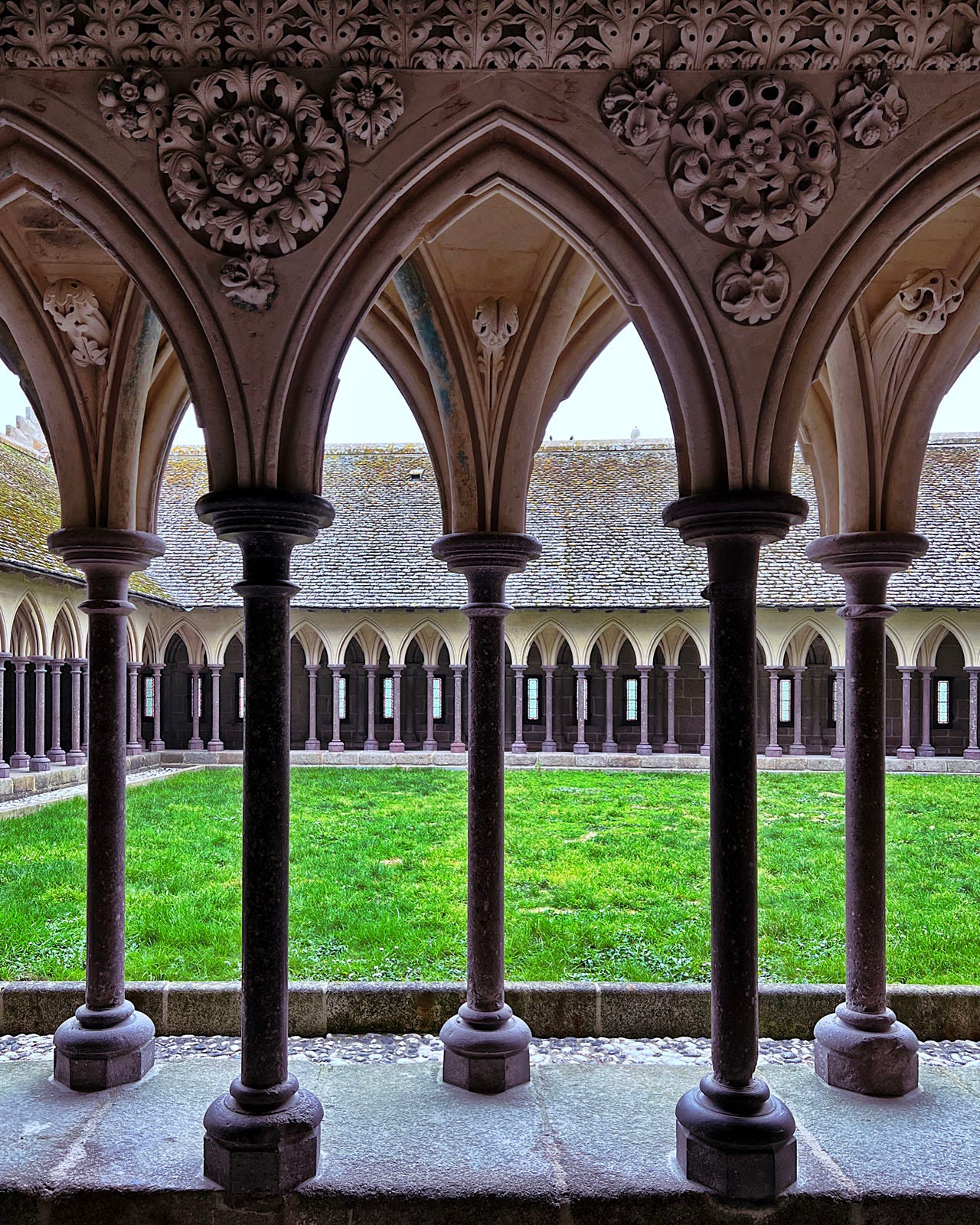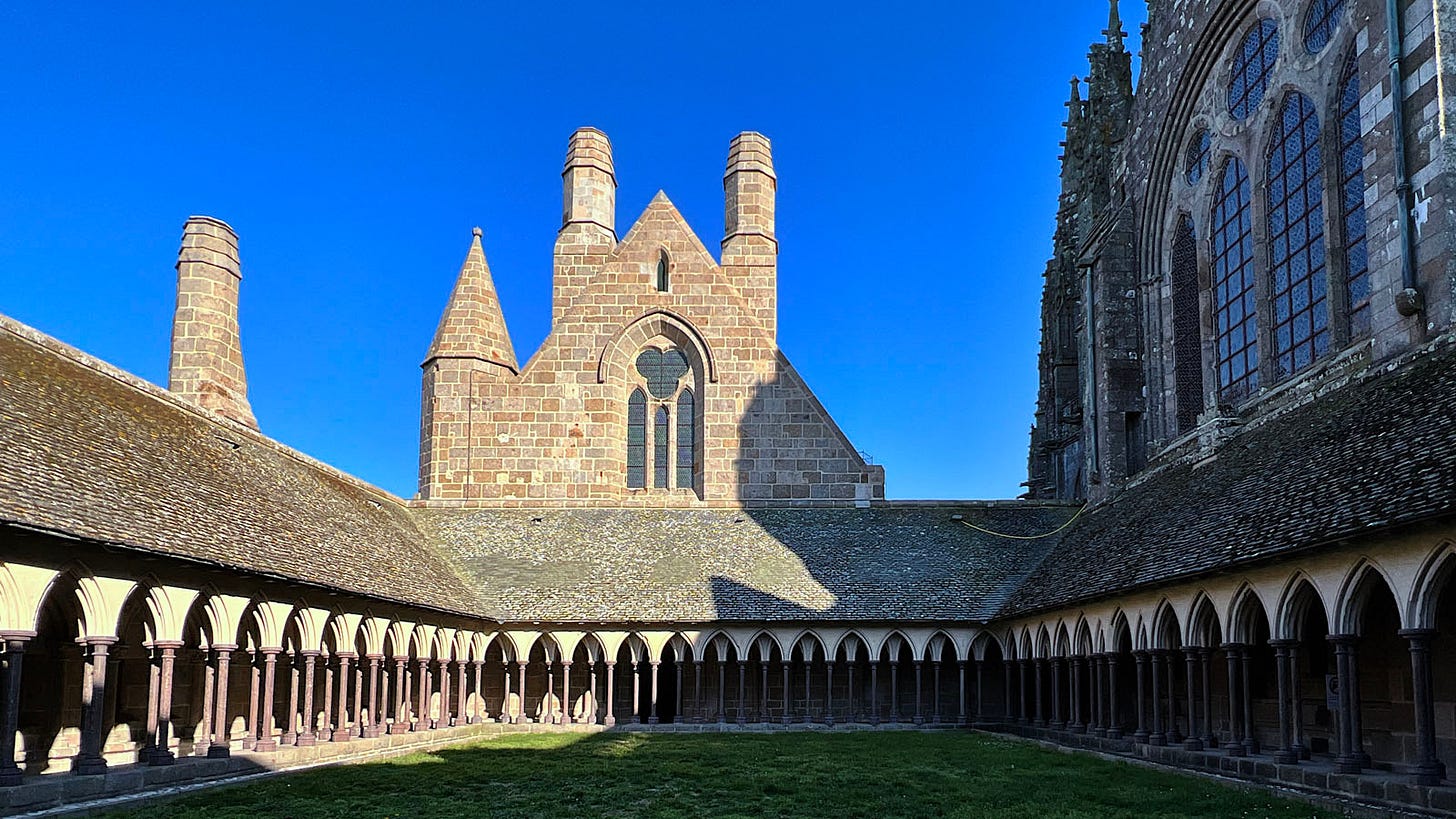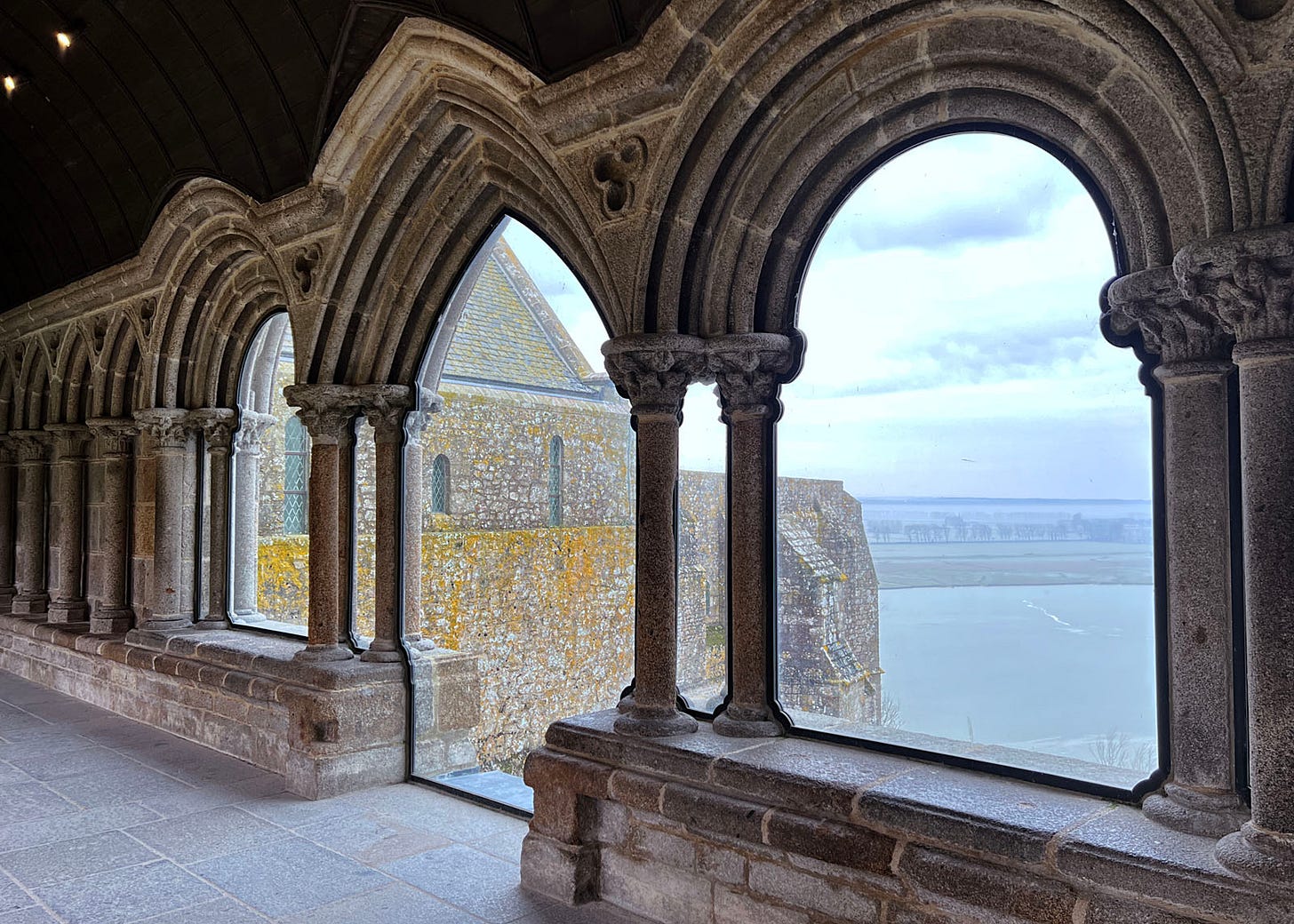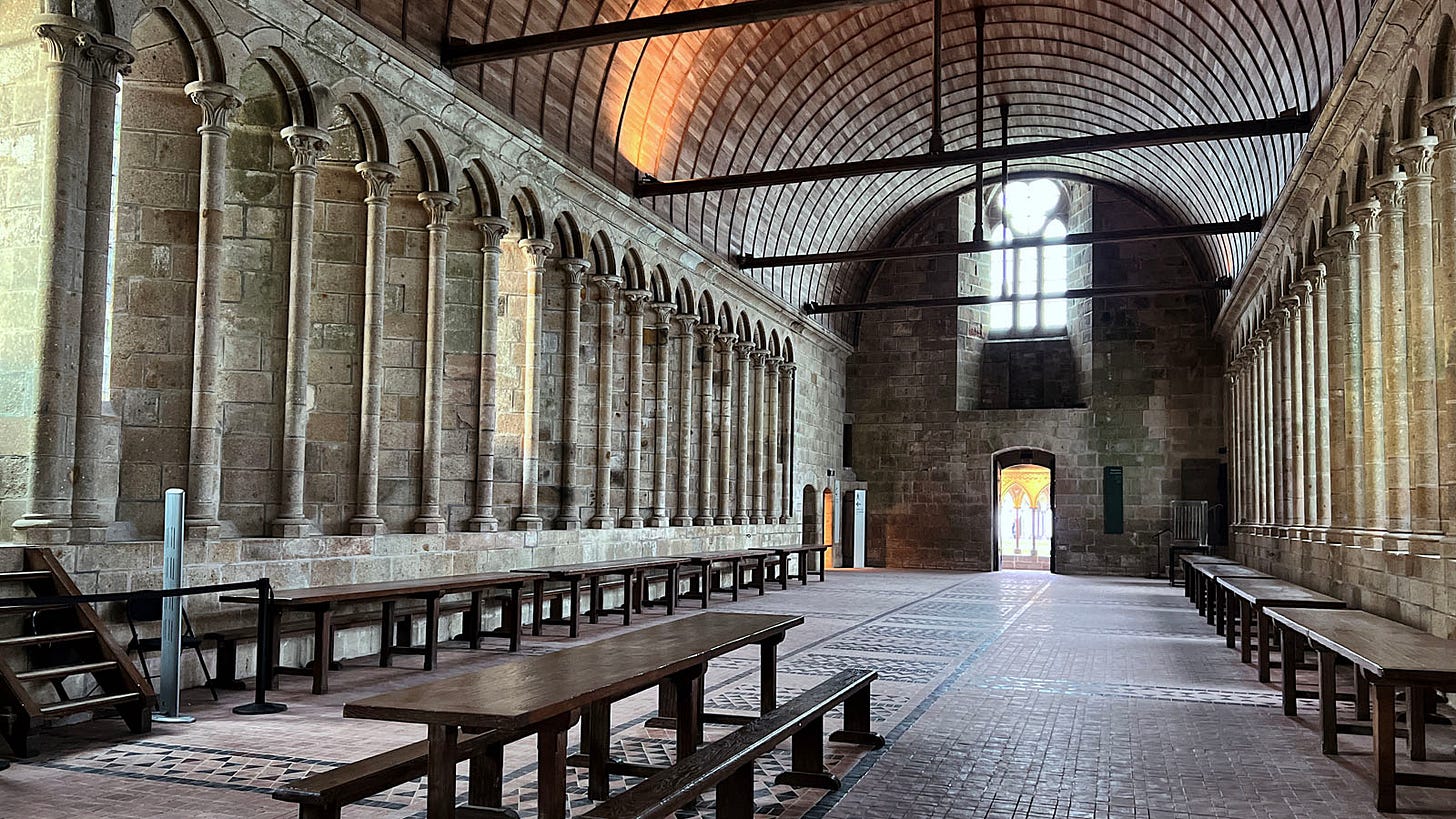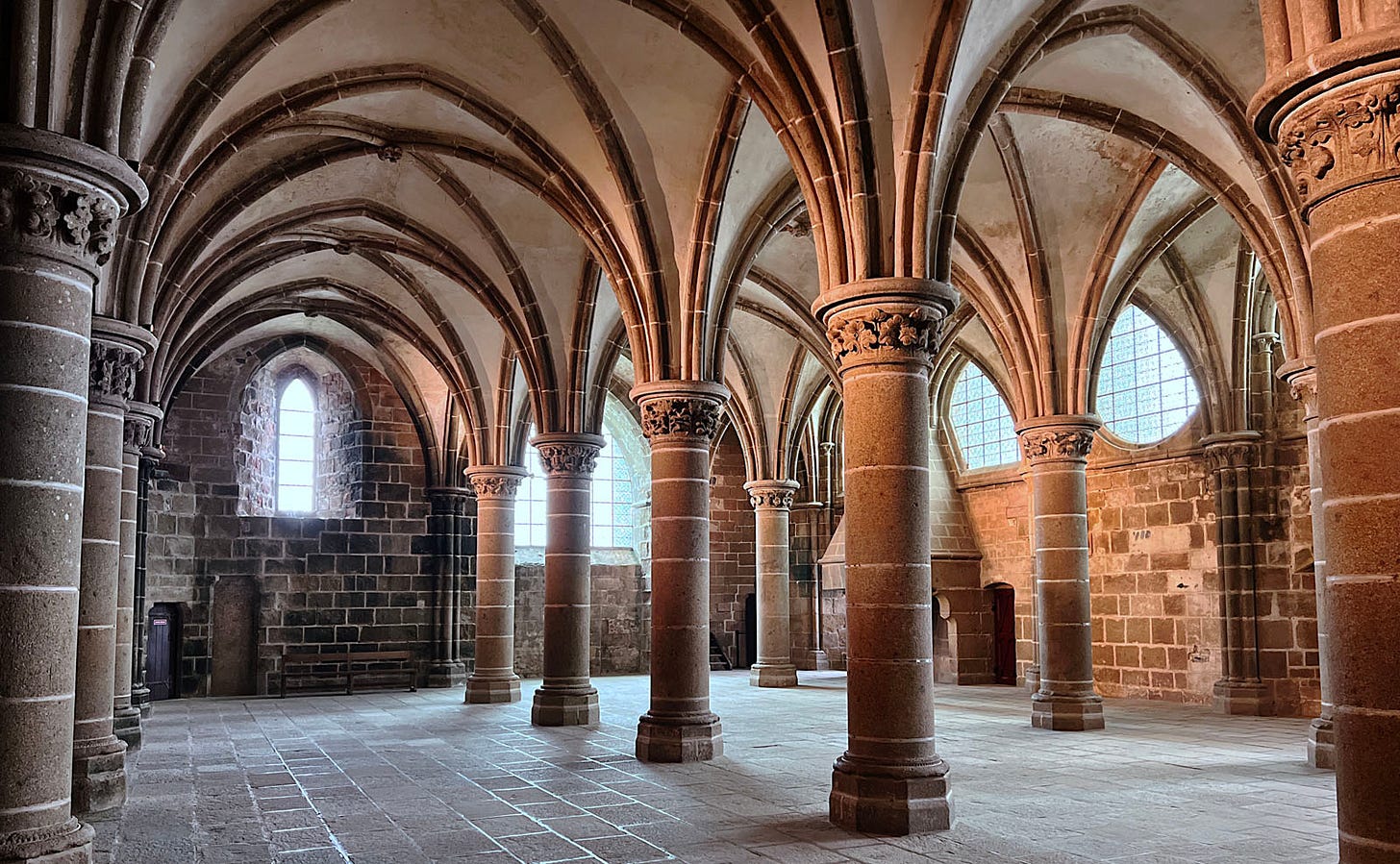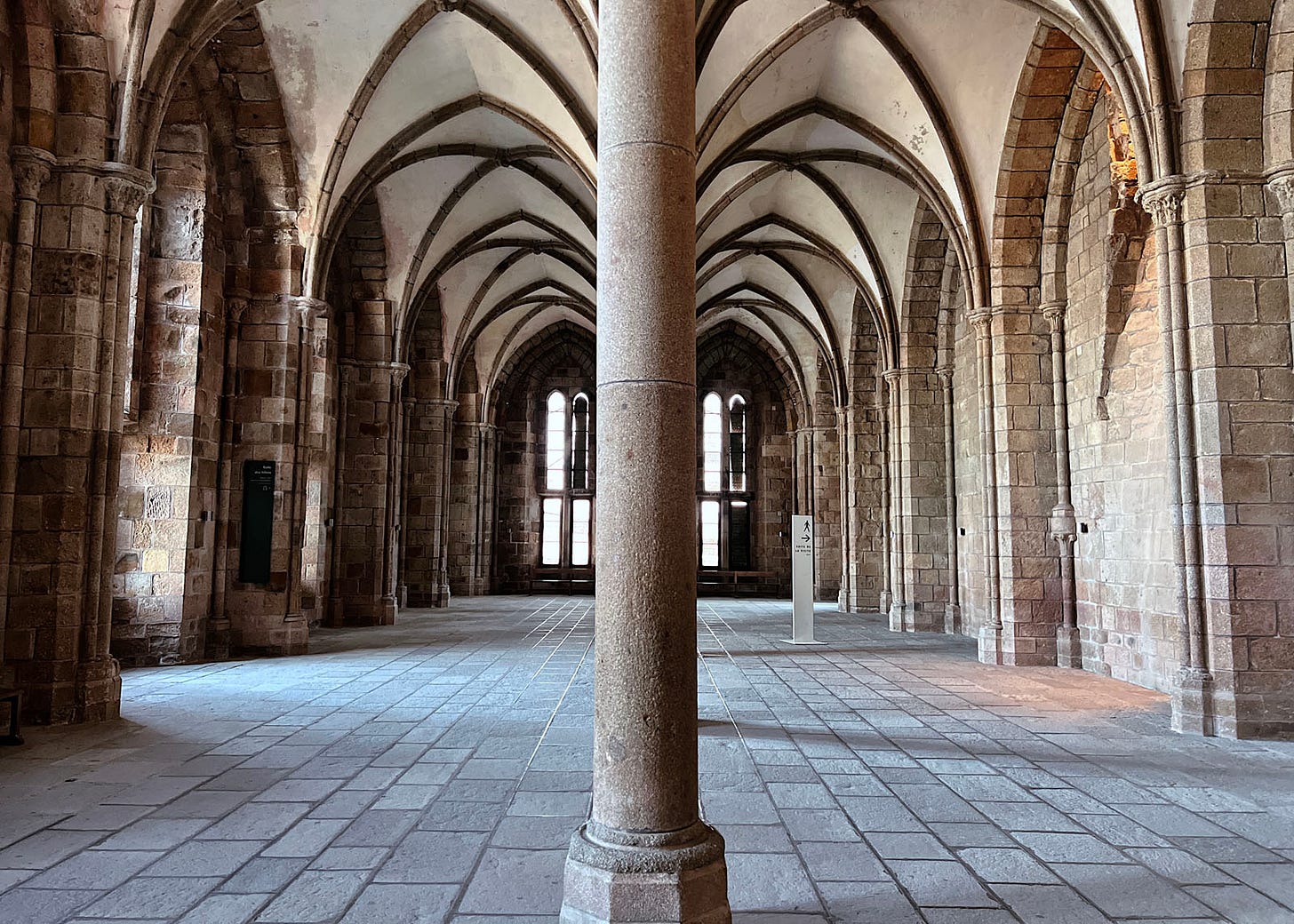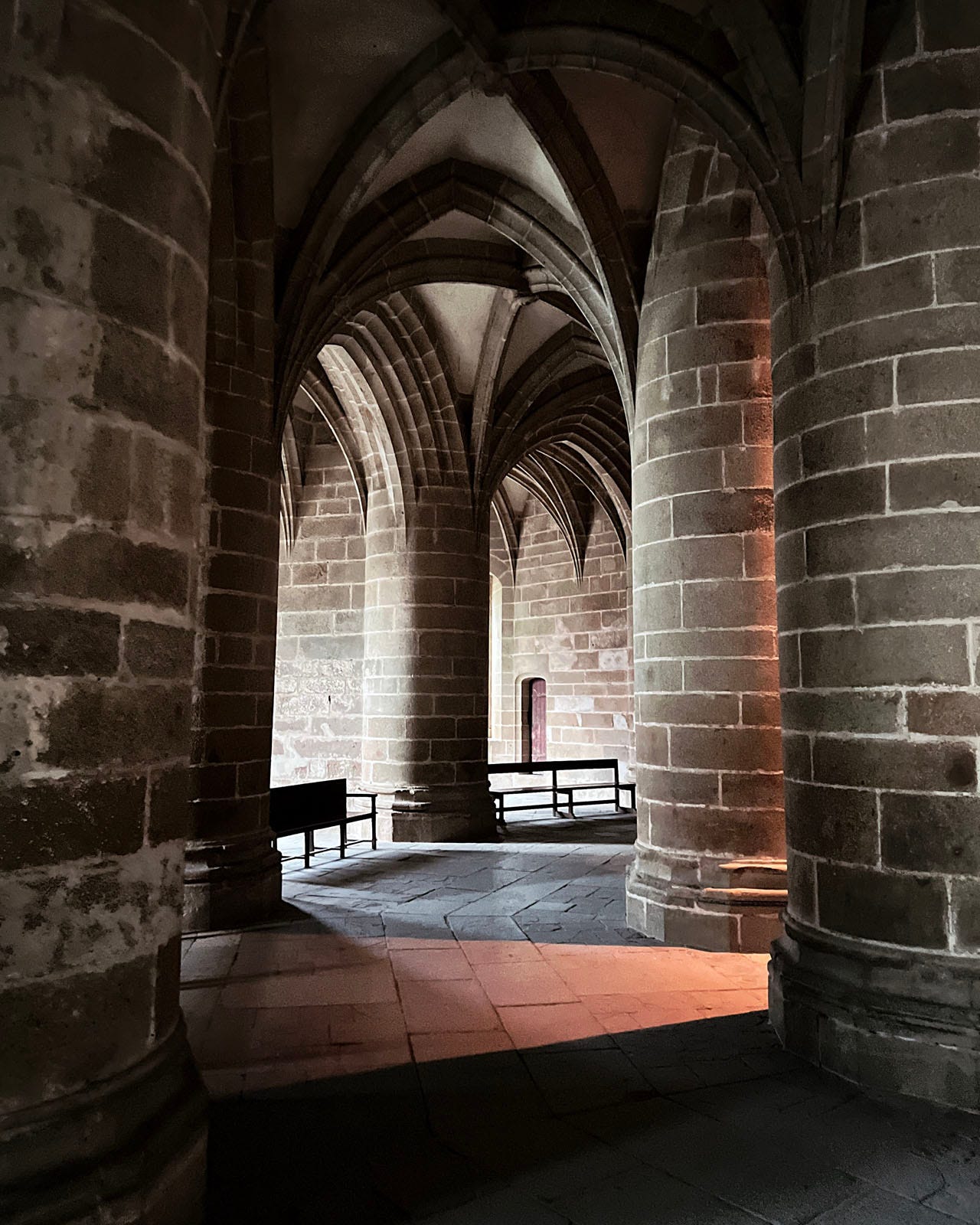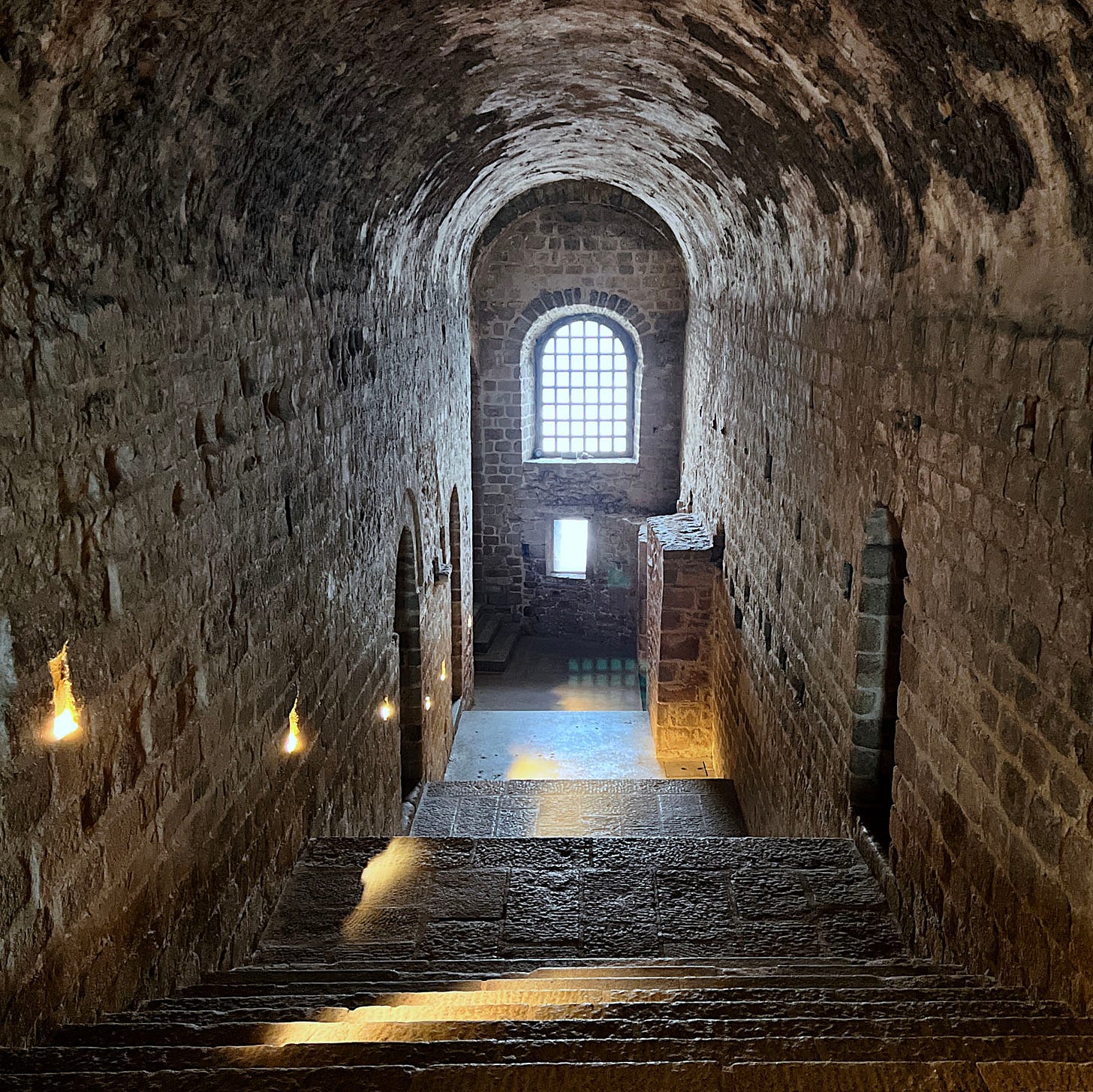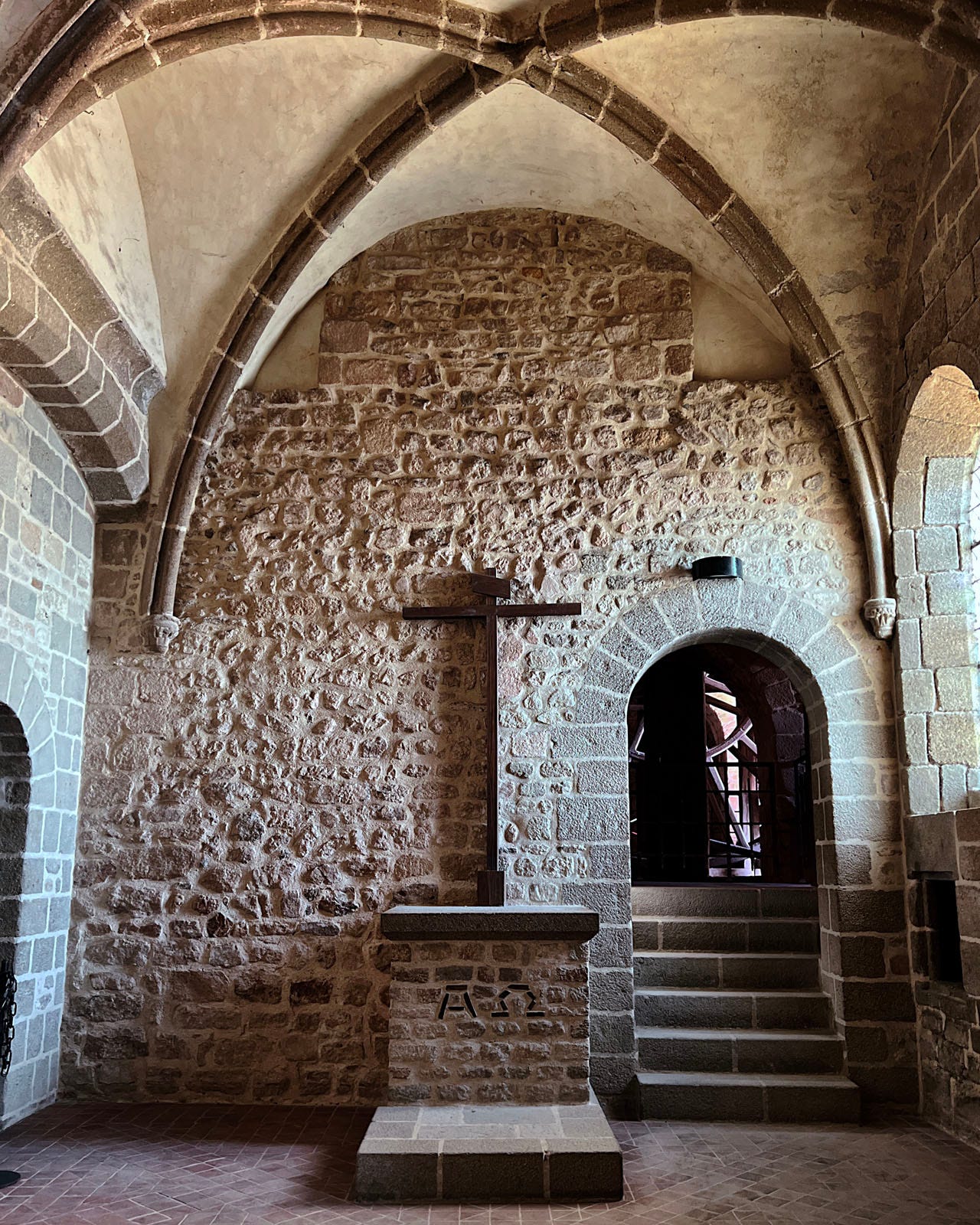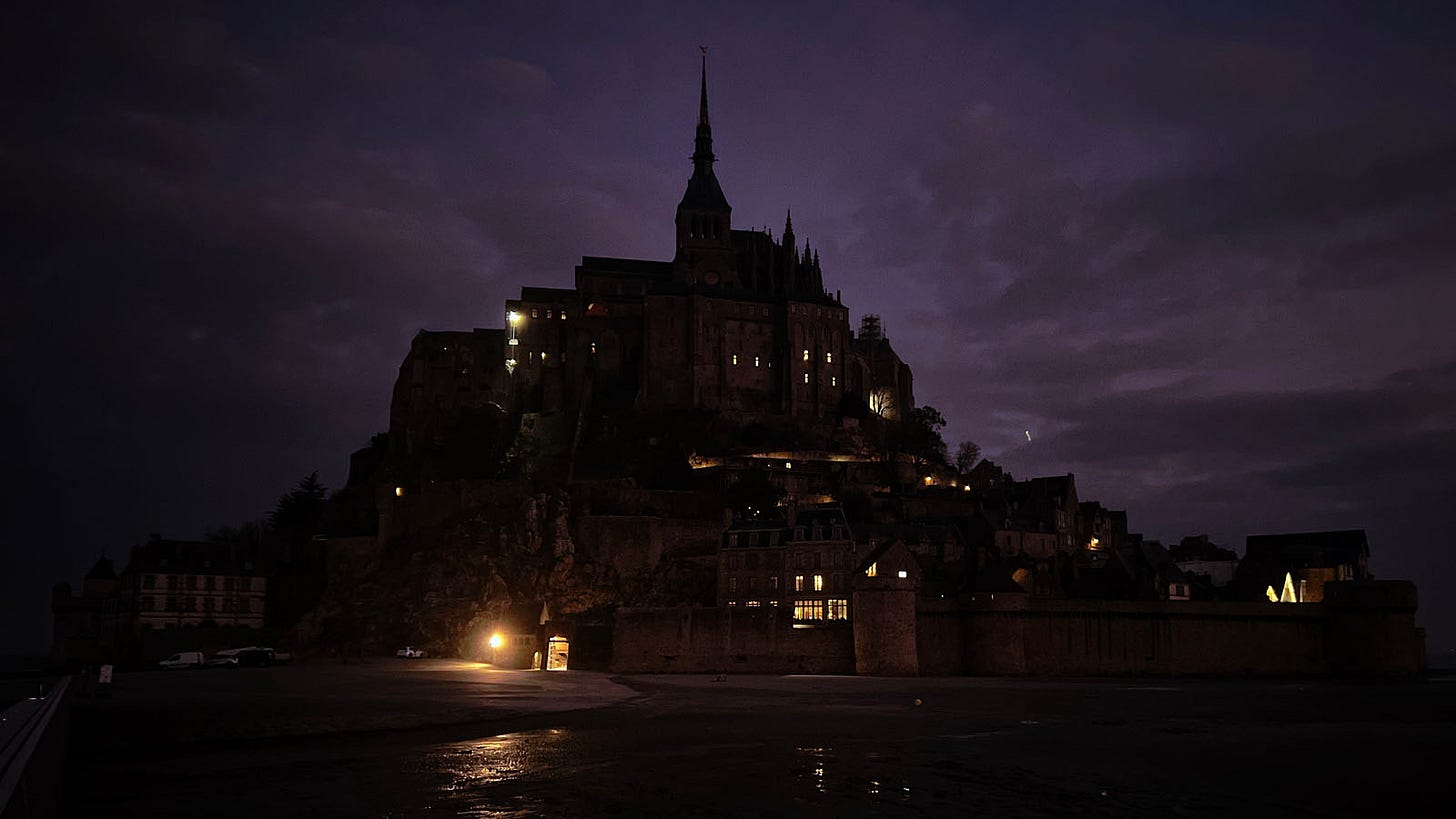Greatest Gothic, #47: the Abbey of Mont-Saint-Michel
An Iconic Monastic Retreat Rising from Shifting Seas
(9 min read) Mont-Saint-Michel is one of the most striking architectural sites in the world, rising from a tidal island off the Normandy coast. While the abbey features some impressive Gothic elements, its dramatic setting is what makes it a singular masterpiece and one of the world’s greatest works of Gothic architecture.
(For more about this series, see the introduction and the countdown.)
Common Name: Mont-Saint-Michel
Official Name: L’abbaye du Mont-Saint-Michel (Abbey of Saint Michael of the Mount)
Location: Mont-Saint-Michel, Normandy, France
Primary Dates of Gothic Construction: 1211-1523
Why It’s Great
The site! More than just a remarkable Gothic abbey, Mont-Saint-Michel is a triumph of setting. Rising from a tidal island off the coast of Normandy, its silhouette is among the most iconic in the world. While the abbey itself contains some nice Gothic components, it is the interplay between architecture and landscape that makes it worthy of inclusion in my countdown.
Why It Matters: History and Context
Perched atop its namesake tidal island, the Abbey of Mont-Saint-Michel evolved over more than half a millennium, incorporating styles from 11th century Romanesque to 18th century Neoclassical. While it includes some fine Gothic architecture — particularly the cloister — if it were located anywhere else, I would not include it in this survey of the world’s greatest Gothic architecture.
But architecture is about more than just buildings in isolation. How structures interact with their landscape is integral to their quality and an important part of how we should assess them. Mont-Saint-Michel is inseparable from its setting, rising like a vision from the shifting tides and reinforcing the sense of sacredness that has drawn pilgrims for over a thousand years.
The abbey’s origins lie in the misty 8th century, when few written records were kept and history blurs into legend. But in 708, the Archangel Michael — apparently unimpressed by the region’s existing churches — appeared to the Bishop of Avranches and instructed him to build one in a much more dramatic location: on a tidal rock battered by the sea.
All of the construction that happened between then and the early 11th century is vanished or embedded in later layers of building, and 1023 is now considered the date when the first stone was laid of the abbey we know today.
From the start, pilgrims braved the unpredictable tides to reach the island, trekking across the flats at low tide to visit the abbey. The tidal range here is among the largest in the world — shifting by up to 14 meters (46 feet) — and the waters can rise at speeds of over 2 meters per hour. Today, a modern bridge ensures access regardless of tide conditions (figure 3), but for those who want to experience the crossing as medieval pilgrims did, it’s still possible — if you plan ahead and are very careful.
The abbey was an early supporter of William the Conqueror, and after his conquest of England the abbey was granted land there—including another island that was eventually developed into a daughter foundation: St Michael’s Mount in Cornwall. Over the centuries, the abbey continued to expand, rising higher and higher in layers of stone on the island, as well as founding additional daughter abbeys.
The abbey was besieged multiple times during the Hundred Years’ War (1337–1453), but it never fell. During the French Revolution, the abbey was closed and converted to a prison, turning a blind eye to its original monastic purpose.
By the mid-19th C, though, there were campaigns to restore the abbey as an historical monument. The prison was closed in 1863 and the site was officially given monument status in 1874. It was also one of the first sites named a UNESCO World Heritage Site, back in 1979.
The abbey is again a monastic foundation, housing a small group from the newish order of the Monastic Fraternity of Jerusalem. And pilgrims continue to come today, though they are largely of the tourist rather than the religious variety. Over three million people a year come to visit the place, which means planning in advance is a good idea if you like to avoid crowds.
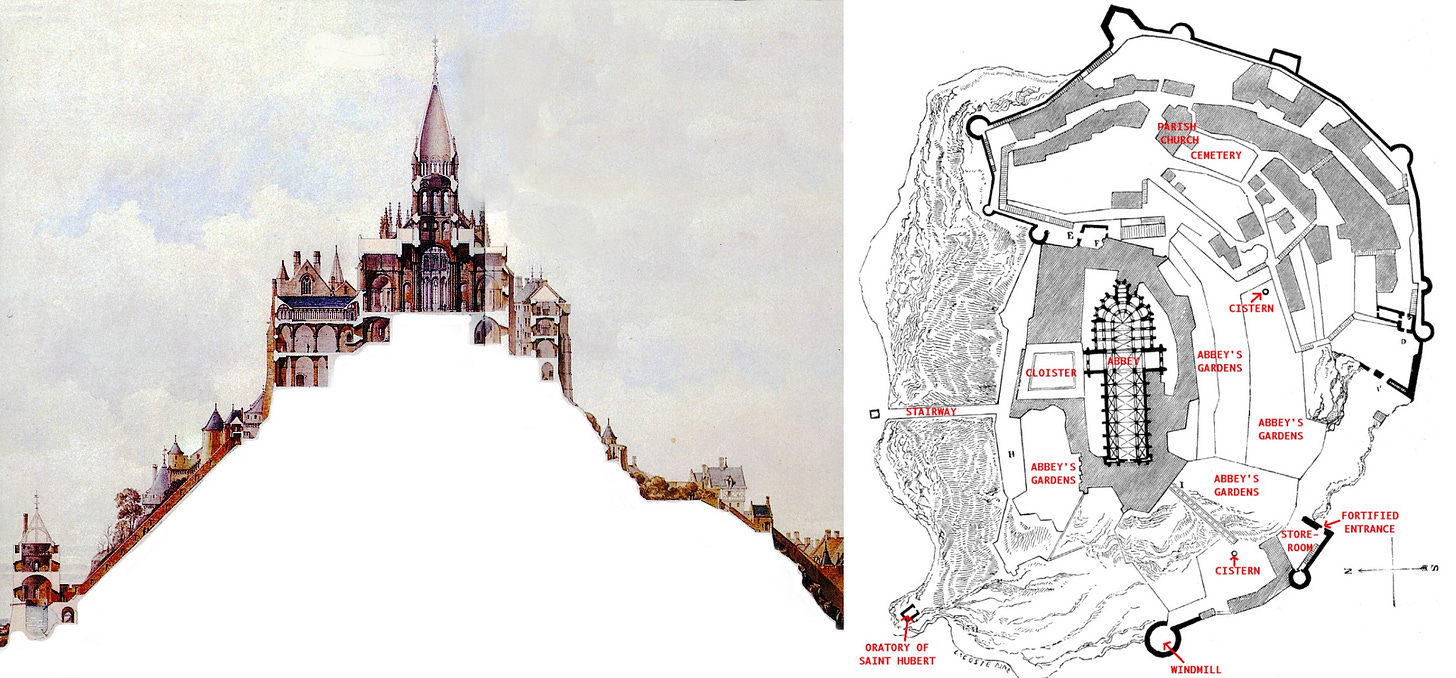
The abbey itself is a sprawling, multilayered complex with one-way guest circulation; in addition, there’s only one real route through the village up to the abbey entrance itself. To make sense of it all, we will simply follow the sequence from the island’s entrance gate through the town and into the abbey. Figure 5 shows some architectural drawings that will help you appreciate the layered nature of the abbey and complexity of the town around it, as well as orient yourself to the photos and text.
Photo Tour
The route to the abbey entrance winds around the south side of the island, and you can choose to walk up the village street, or along the ramparts that runs alongside it (figure 7). There are lots of great views from the ramparts, both out into the landscape and up towards the abbey (figures 3 & 8), but the street has its charmas as well, and there’s a small parish church along that path that is worth popping into (figure 9).
After the climb up to the abbey entrance, you pass through another gate and face yet more flights of stairs (figure 10). But soon enough you will reach the highest level of the abbey church (figure 11).
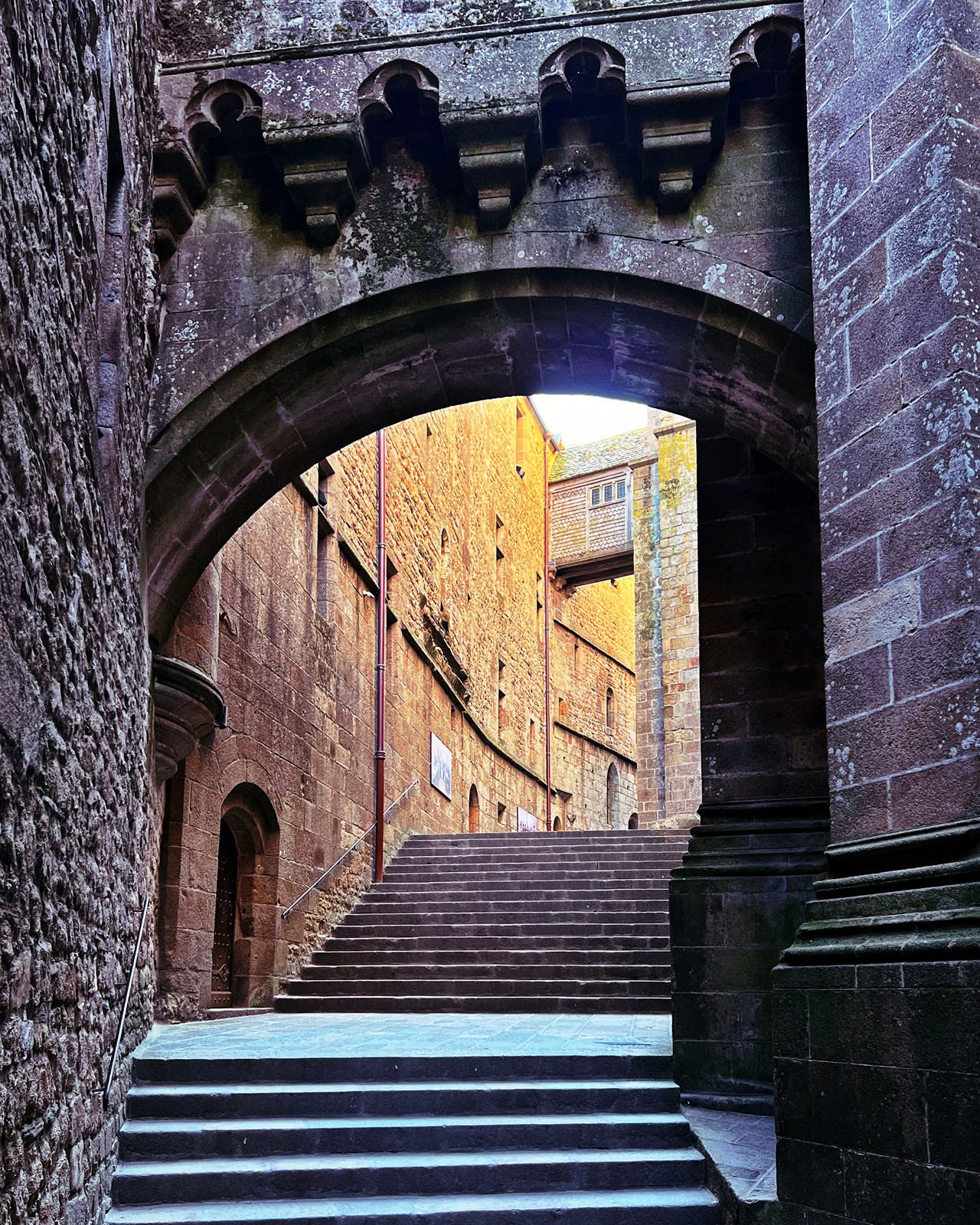
The interior of the abbey church has two main phases of construction, in two distinct styles. The western portion is Romanesque and dates from c1060-c1125 (figures 12-14). However, the Romanesque chancel collapsed in the early 15th century, and was so the chancel and ambulatory were rebuilt from 1446-1523 in a late Gothic style known as Flamboyant (figures 14-16).
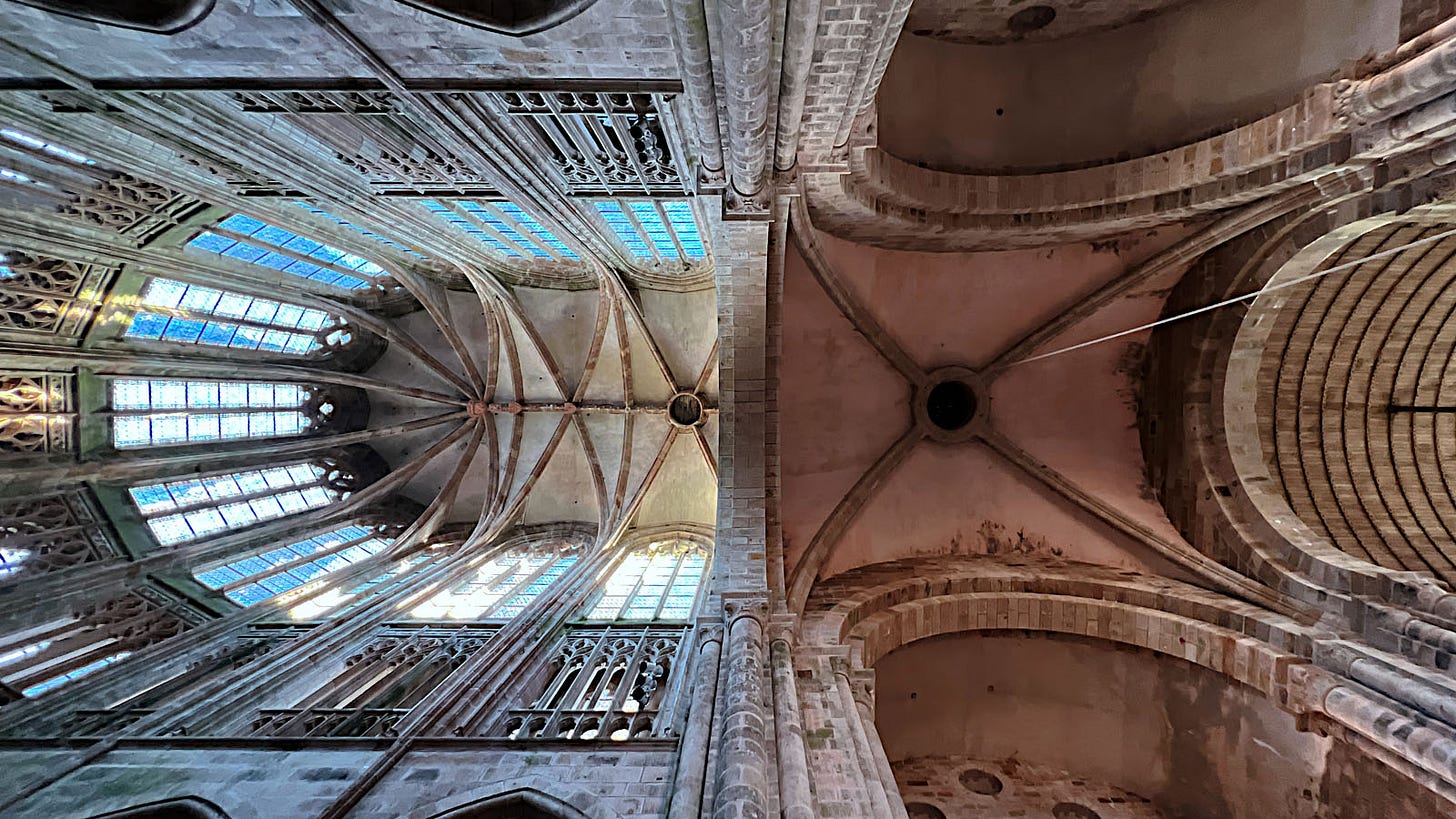
Exiting the church, you enter the cloister (figures 17-21), which to me is the most impressive part of the abbey. The cloister dates form 1225-28 and has a two-layered colonnade with offset bays, which creates a wonderful shifting rhythm as you walk around the cloister. In addition, detailed carvings fill many of the spandrels between the arches, and there’s an amazing view through a tripartite opening on the west side.
From the cloister, you can enter the refectory (figure 22), where the months took their communal meals and which — I believe — was built at the same time as the cloister.
At this point, the pathway through the abbey begins descending, and you enter older spaces as you go down. The cloister and refectory, for example are built atop structures that were constructed a couple decades before: the cloister and refrectory were built above the “Knights’ Hall” and “Hosts’ Hall, ”respectively (figures 23 & 24). This level also contains the crypt underneath the chancel (figure 25).
The descent continues, with additional treats and surprises here and there (figures 26-28) until you exit the abbey.
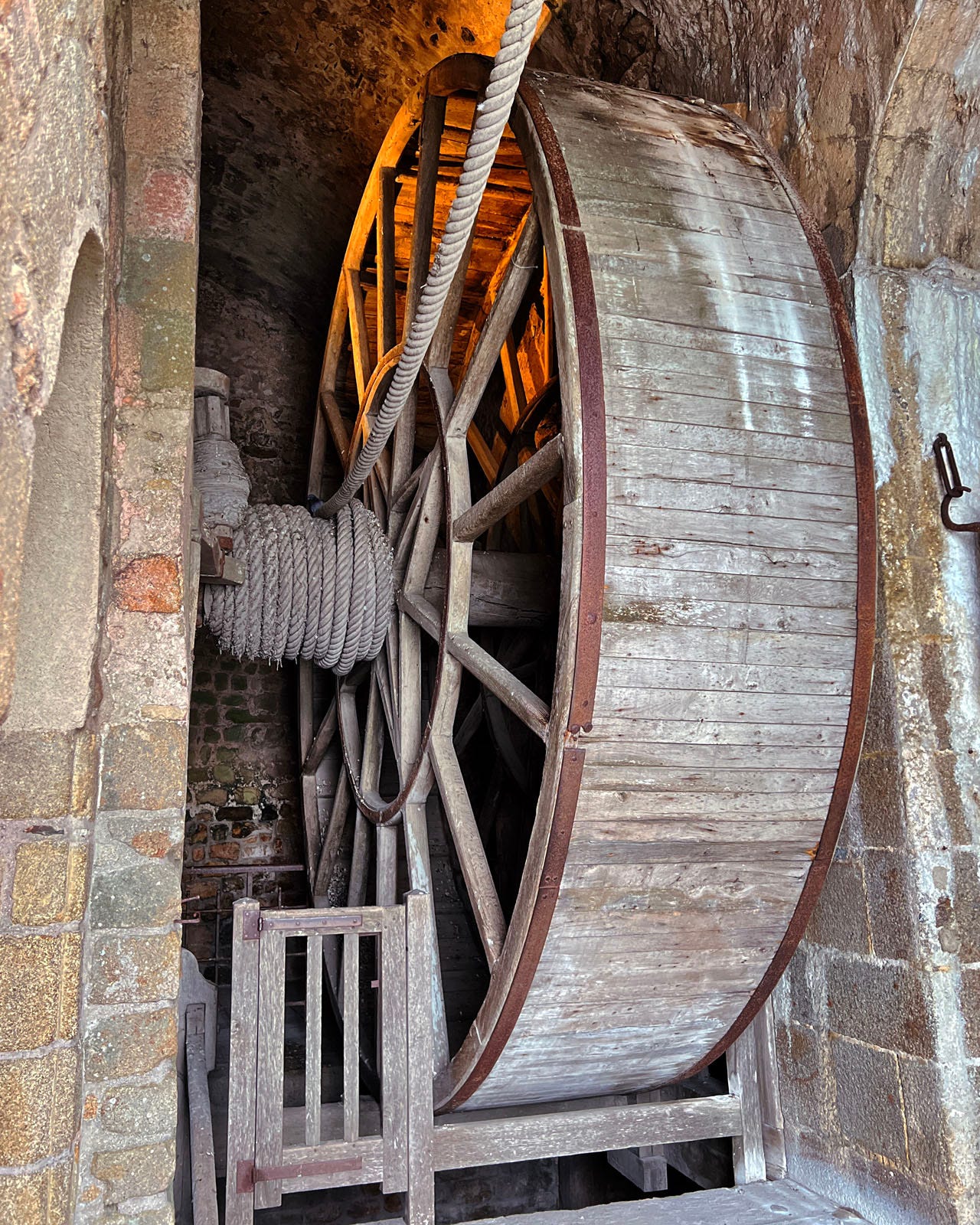
Upon exiting, you find yourself in the abbey garden and can take a look back at the impressive vertical abbey from the west (figure 29).
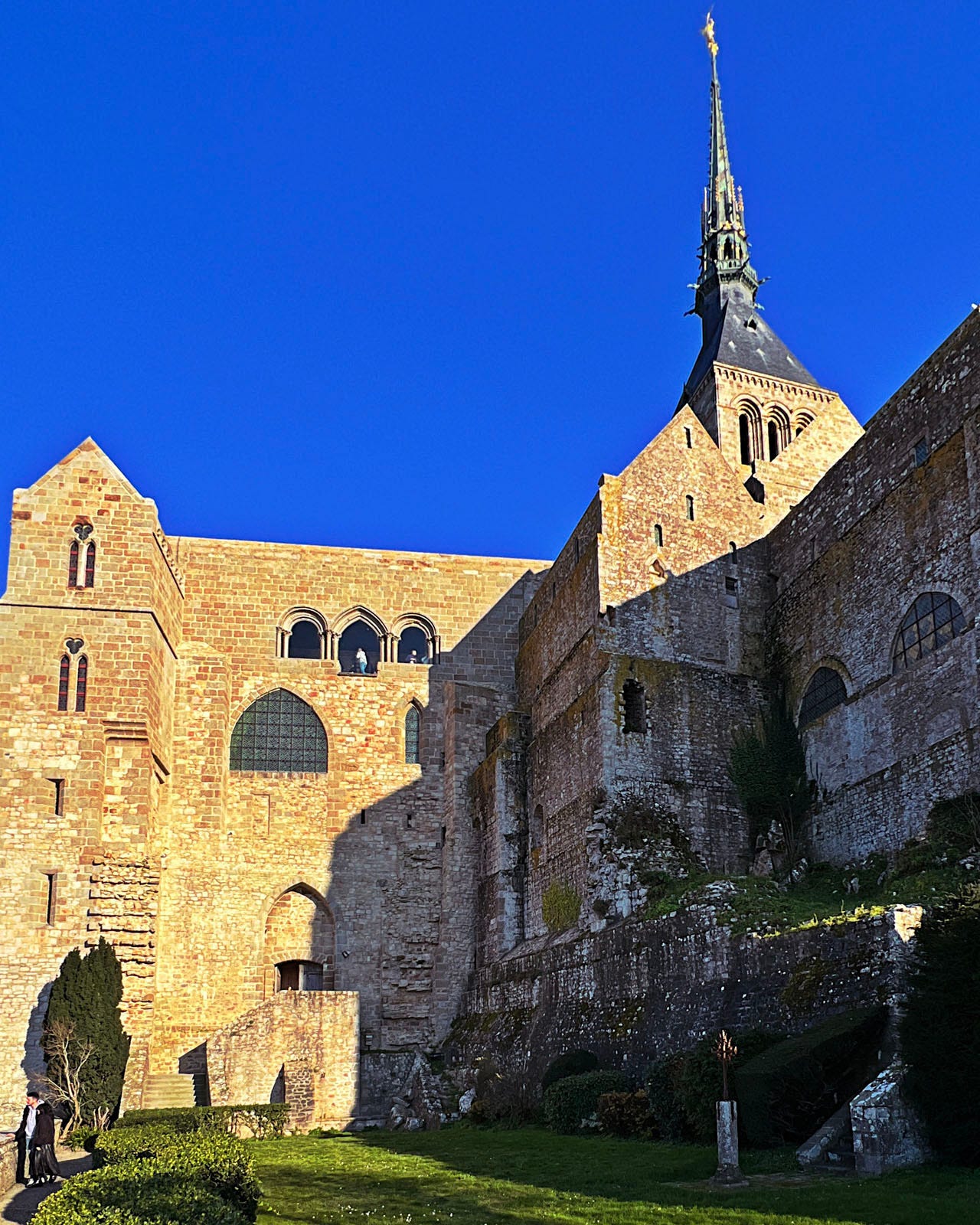
Visiting Advice & Conclusion
My Visit Dates: 28-30 January 2023
Mont-Saint-Michel is located in a fairly remote section of coastline in Normandy. So whether coming by private car (which I did) or public transport, you will first park or stop on the mainland and then take a shuttle across the long bridge in figure 3, which will drop you off within a few hundred meters of the island.
Some three million people a year visit Mont-Saint-Michel — that’s an average of over 8000 people each day, and way too many for my taste.
If you have the time and can afford it, spending a night on the island in one of the small hotels in the village is ideal. I was visiting in January and expecting the weather to be iffy, so I spent two nights in order to increase my chances for good photographs. I got lucky with both the weather and the crowds, as you can see from my photos. Late January is definitely low season, and I found the number of visitors to be quite bearable (and I hate crowds).
Most visitors are day trippers, and so while the crowds might get heavy from late morning til mid-afternoon, spending the night here will give you some quiet time to enjoy the place. There are only a few hotels, and the shuttle doesn’t run all night. If you stay overnight, you can explore the island at dusk and dawn virtually alone — the abbey isn’t open to the public then, but the village and ramparts offer plenty to explore.
Mont-Saint-Michel is a place where history, architecture, and landscape merge into something almost mythical. Whether visiting as a tourist or a modern pilgrim, walking its ancient paths—especially in the quiet hours—offers an unforgettable glimpse into the sacred and the sublime.


